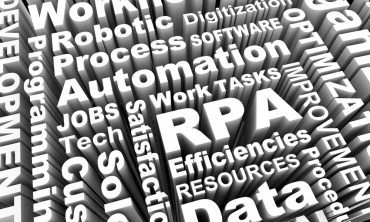
Real-time monitoring and analytics provide tangible metrics to structure ESG programs around report results.
Over the last few years, manufacturers have focused increasingly on environmental, social, and governance (ESG) principles – a trend fueled by heightened climate concerns and increasingly stringent metrics by which investors and consumers judge businesses. In simple terms, ESG denotes a set of frameworks that measure the impact of a company’s sustainability and ethical practices on its financial performance and operations.
Beyond sustainability, public companies embracing ESG business models tend to be more valuable: according to an NYU Stern meta-study, the majority of ESG-focused investment funds outperform the broader market. However, despite more and more organizations in the industrial sector making ESG promises each day, very few have made meaningful progress in baking ESG into their strategies. Given this gap in progress, how can manufacturers get serious about setting and meeting ESG goals?
The answer lies in understanding the challenges to embracing ESG policies from the top floor to the plant floor and identifying programs that can create tangible, measurable results.
Challenges Facing ESG Programs
First and foremost, organizations must recognize what inhibits them from adequately integrating ESG into their overall business strategies. One underlying cause of poor ESG performance? Loosely defined policies.
ESG programs are subjective, meaning it’s up to companies to define the details surrounding their initiatives. Unfortunately, many organizations miss the mark in laying out these details and start their ESG journeys with low employee engagement, limited awareness, and undefined financial and operational benefits.
In fact, according to a recent Plant Services survey, 14.3% to 33.7% of manufacturing workers indicated having zero involvement in their organizations’ ESG policies. This statistic serves as a call to action for manufacturers to improve how they define and communicate ESG goals, urge progress, and stress the importance of their principles at every level of the company. Once an organization has a clearly defined ESG business model that lays out specific goals and engages its workforce to rally behind them, identifying the solutions best tailored to their needs is the next step toward ESG success.
See also: Actioning Sustainability: How Tech is Making ESG a Reality
The Case for Real-Time Technologies
You can’t change what you can’t measure. This has been the biggest hurdle for organizations that set grand ESG goals before figuring out measurement frameworks and processes for achieving those aspirations. For manufacturers, asset monitoring and optimization technologies should serve as the foundation for ESG initiatives, as they can set measurable targets around variables such as scrap and energy usage.
The promise of asset monitoring technologies has already been established but remains underutilized. The same Plant Services report concluded that the majority of companies (58.9%) say energy monitoring technology is vital for addressing their ESG objectives. Leak detection (43.2%) and asset monitoring and analytics solutions (40%) also scored high among the top solutions respondents preferred. These figures only increased further among the utility and power generation industry, where a significant number of facilities are using leak detection (60%) and asset monitoring and analytics solutions (53.3%).
Elevating ESG with Production Health
While technologies like leak detection and energy usage monitoring can provide insights into very specific elements of a production line, Production Health technologies, which utilize AI built specifically for manufacturing, can provide both a bird’s-eye view of production lines and a deep dive into its inner workings. This Production Health approach combines data from two manufacturing perspectives:
- Machine health, providing predictive machine maintenance with continuous monitoring and diagnostics.
- Process health, a framework for helping individuals reduce waste, throughput, and yield of production lines.
This kind of AI-driven solution acts as a decision-making tool that looks at all your assets and processes and constantly learns how to improve them. By applying purpose-built AI to production lines, manufacturers gain access to thousands of complex calculations every minute. This holistic view can deliver a combination of benefits that includes reducing scrap created by machine breakdowns, making production lines safer for workers, and decreasing energy and water usage by optimizing machine performance – all while creating a tangible return on investment. Osem-Nestlé is one successful example–a global food manufacturer that is using data to transform operations on many levels. Gofna Liss-Rubin, Osem-Nestle’s Open Innovation Manager, explained the benefits this way:
“Whenever we prevent a failure, we prevent everything that comes with that. So where we reduce the amount of labor time and the amount of machine time, we reduce all the inputs that are used to operate the machines – energy, water, and gas emissions. Any improvement that we have in operation and the reduction of the inputs helps us meet our sustainability goals.”
It is undeniable that innovative technologies are pushing the industry forward in almost every area, and ESG is no exception. Real-time monitoring and analytics provide tangible metrics to structure ESG programs around report results. It’s a consistent and accurate benchmark that will be useful for everyone, from plant managers to executives to shareholders. Manufacturers with this technology already in place should immediately view it as a tool to advance ESG initiatives, while those without should consider it a foundational building block.





























